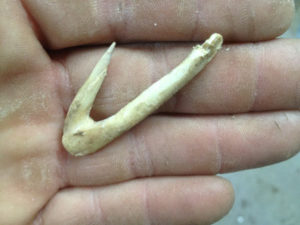Harvesting Survival Food
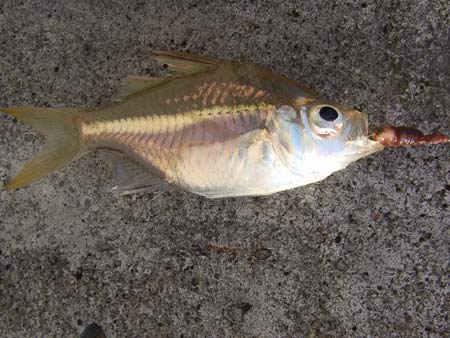
Of the basic survival needs, harvesting survival food is usually the least important. You can go a month or more without food. But, if you want to be out in nature a long time, or if you don’t like slowly starving while you’re there, then learning what you can eat is a necessary survival skill.
There is a lot to write about in the category of food. I’ve broken it down into three main topics to make it easy for you to find what you’re looking for:
Wild Edible Plants
Edible Insects
Animals
Wild Edible Plants
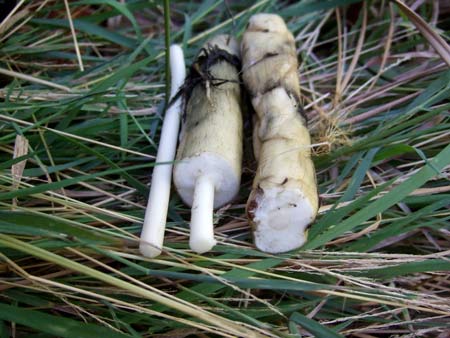
When it comes to survival food, edible wild plants should be at the top of your list of things to eat. Wild plants are usually abundant and much more nutritious than their cultivated cousins. Plants are easy to gather and it’s hard to overharvest them.
There are a few wild plant staples like acorns, cattails and grasses that are both common and abundant. But, most plants have a season they are best to harvest. Samuel Thayer has a couple of really good books on edible plants, the best I’ve ever seen.
Spring is the time for greens and tubers. Summer brings berries, flowers and a few more greens. Fall is the time for more berries, nuts and fruits. In the winter you can find food stored in the roots and tubers of plants. The key is to know when each plant is the best to harvest. You also need to know some of the various cooking methods.
Check out my page on edible wild plants
Return to the top of the page
Edible Insects
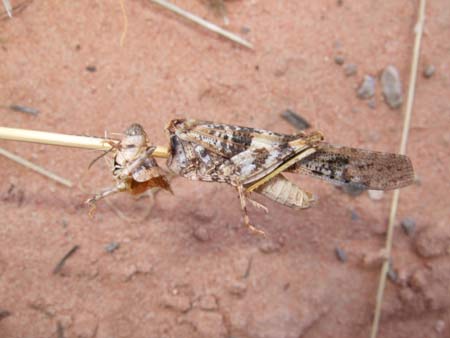
Link to my article on Edible Insects
Insects are a great survival food. They are easy to catch, you don’t need a license to harvest them, and they are super nutritious. The Food Insects Newsletter was a great source of information on eating insects. Now, only back issues are available.
The fat white grubs you find in rotting wood can be eaten raw, so that eliminates the need to make a fire. Most other insects can be roasted or thrown in with plants you are cooking anyway. Sometimes you can find insects like cicadas, ants, termites, and locusts in large numbers so getting lots of them is easy.
I know they make a big deal about eating insects on TV and make it seem like they are disgusting. But just eat them yourself and you’ll probably like them. Most insects I’ve eaten are great. Buttery, nutty flavors are the most common.
Edible Insects
Return to the top of the page
Animals
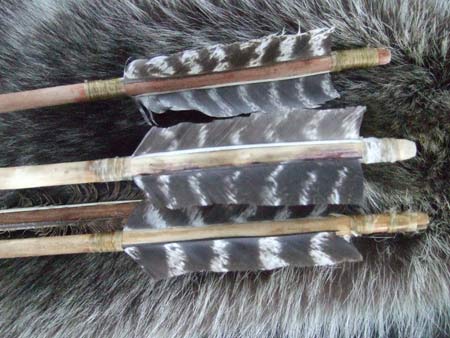
Last is what most people think of when they think of survival food: animals. I’ve broken this down into two main categories for you. In the first of the two animal sub-sections you’ll learn to hunt and trap in a survival situation. We will be going after animals like deer, rabbits and squirrels.
There is another animal sub-section of where you’ll discover how to catch fish, birds, lizards and miscellaneous animals for nourishment.
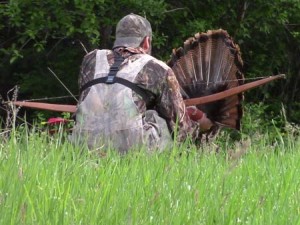
Hunting Large and Small Game
Link to my articles on Hunting and Trapping for Survival
Hunting is glorified in the survival skills world, but it’s not always the best idea to hunt for your food. Depending on your method, you can use a lot of energy when you hunt. Often you will be walking around your area, stalking, and wading through thick brush or water. All that work saps your energy.
Hunting is also time-consuming. You can spend hours out hunting and not harvest anything. That time might be better spent doing something you know will pay off. Other ideas include making your shelter more comfortable, gathering firewood or purifying water.
Also, hunting is a gamble. First you have to see game, then you have to kill it, then you have to find it. If you don’t do every one of those things, you come up empty. So, hunting is a bit of a gamble.
But, survival hunting is one of the most enjoyable wilderness survival skills to practice and succeed at. There is something magical about making a bow and arrows. And when you harvest an animal with a bow that you made with your own two hands, it is one of the most satisfying experiences you will ever have. By far my favorite person to learn traditional archery from is my buddy, Clay Hayes.
Plus, when you succeed, you get meat!!! And that is a real treat when you are truly hungry.
Link to my articles on Survival Hunting and Trapping
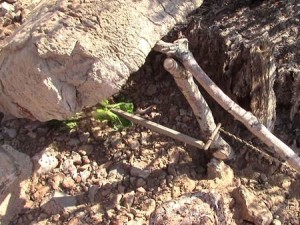
Trapping and Snaring Animals
Link to my articles on Hunting and Trapping
A great way to harvest meat is trapping and snaring small game. You can set your trap line while you gather plants to save time and energy. Once you have the main trap line set, you just have to check your traps to see if you caught anything.
If you set traps and snares, you do a lot of work once, then you are pretty much done. They do the work while you do other things like make your shelter better, gather firewood and purify water. 🙂
The disadvantage to trapping and snaring is that you can cause animals unnecessary pain if you don’t set them right. Make sure you set your line so that the animals die instantly. I take great pride in making quick kills with my traps and snares, so please follow my advice here on the website so you do the same.
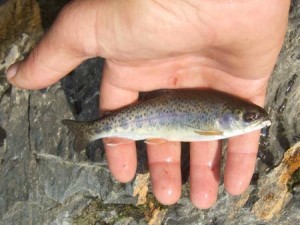
Fish, Birds and Other Animals
Here is my article on how to make a primitive fish hook from deer bone.
Aquatic animals are probably the best survival food to go after. Because fish are such a great food source, you will want to learn some basic survival skills to harvest fish. The methods for catching fish are fairly passive. By that I mean that you set things up to catch the fish, and then go do other things. That is a huge plus when you are pressed for time.
Fish are a great source of fat and protein. I would suggest that you gut the fish and remove the gills, stomach and intestines. Cook anything in the fish’s stomach worth eating, then use the leftover stomach and intestines for bait. You can probably eat the rest of the fish, eyeballs, bones and all.
Harvesting fish is done by hand (called “noodling”) or with hooks, fish spears, nets and traps. I’ll show you each of these methods here on the website.
